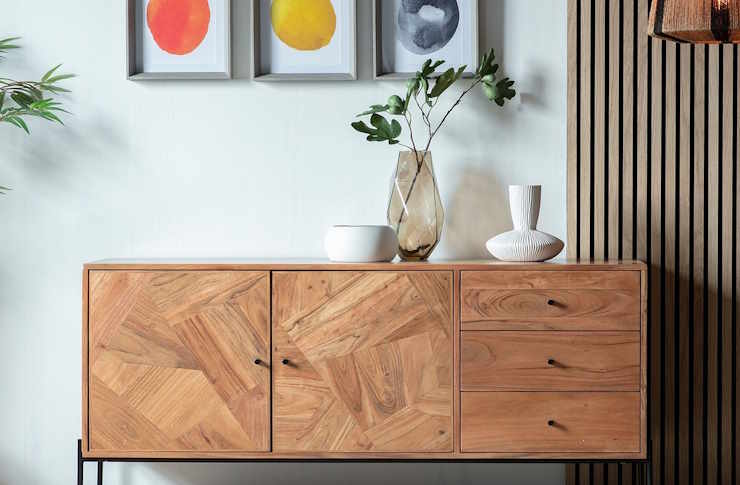Choosing the Right Style and Material for Your Artwork
Framing artwork involves more than selecting an attractive border—it requires understanding materials, styles, and preservation techniques that protect and enhance your pieces. Whether you're displaying a family photo, a canvas painting, or a vintage print, the right framing decisions can transform how artwork appears and how long it lasts. This guide explores essential factors to help you make informed choices that suit your art and space.

How to Choose the Right Frame for Your Art Piece
Selecting a frame that complements your artwork requires balancing aesthetics with practical considerations. Start by examining the artwork’s colors, style, and medium. Traditional oil paintings often pair well with ornate, carved wooden frames, while modern prints and photography benefit from sleek, minimalist designs. Consider the matting as well—neutral tones like white or cream provide breathing room and prevent visual clutter, while colored mats can echo specific hues within the artwork.
The frame width matters too. Larger artworks typically require wider frames to provide adequate visual weight and balance, while smaller pieces look best with narrower profiles that don’t overwhelm the image. Test different frame samples against your artwork before committing, as lighting and surrounding decor significantly influence how frame and art interact. Remember that the frame should enhance, not compete with, the artwork itself.
Popular Framing Styles for Different Types of Art
Framing styles have evolved to suit various artistic movements and preferences. Classic gallery frames feature simple profiles in black, white, or natural wood tones, making them versatile for contemporary art, photography, and prints. These clean designs keep focus on the artwork while providing professional presentation. Ornate frames with decorative molding and gilded finishes suit traditional paintings, antique prints, and formal portraits, adding historical elegance and grandeur.
Floater frames create the illusion that canvas paintings hover within the frame, popular for modern and abstract works where the artwork’s edges contribute to the overall composition. Shadow box frames accommodate three-dimensional objects like medals, textiles, or memorabilia by providing depth between the glass and backing. Rustic frames made from reclaimed wood or distressed finishes complement nature photography, folk art, and farmhouse-style interiors. Each style serves specific aesthetic goals while protecting the artwork from environmental damage.
Materials Used in Quality Art Framing
Frame materials significantly impact durability, appearance, and cost. Solid wood frames, crafted from hardwoods like oak, walnut, or maple, offer exceptional strength and timeless beauty. These frames can be stained, painted, or left natural, providing extensive customization options. Wood frames suit traditional and contemporary settings alike, though they require occasional maintenance to prevent warping in humid conditions.
Metal frames, typically made from aluminum or steel, deliver modern aesthetics with slim profiles and clean lines. They resist moisture and pests better than wood, making them ideal for humid environments or commercial spaces. Metal frames come in various finishes including brushed silver, matte black, and gold tones. Composite materials like medium-density fiberboard covered in wood veneer or synthetic finishes provide budget-friendly alternatives that mimic natural wood appearance while maintaining stability.
Acid-free matting and UV-protective glazing represent critical material choices for preservation. Standard glass offers basic protection, while museum-quality acrylic or conservation glass filters harmful ultraviolet rays that cause fading and deterioration. Backing boards should be acid-free and lignin-free to prevent chemical damage over time, particularly important for valuable or irreplaceable artwork.
Benefits of Professional Art Framing for Artwork Preservation
Professional framing extends artwork lifespan through specialized techniques and materials unavailable in standard retail frames. Trained framers use conservation mounting methods that avoid permanent adhesives, allowing artwork removal without damage. They maintain proper spacing between artwork and glazing to prevent moisture accumulation and mold growth, particularly crucial for works on paper.
Professional framers assess each piece individually, recommending appropriate materials based on the artwork’s medium, value, and display environment. They understand how different papers, fabrics, and paints react to various framing materials, preventing chemical interactions that cause discoloration or degradation. Custom cutting ensures precise measurements and clean edges, while professional assembly guarantees structural integrity that withstands years of hanging.
Environmental control represents another preservation benefit. Professionals seal frames properly to minimize dust infiltration and insect access while allowing minimal air circulation to prevent condensation. For particularly valuable pieces, they may recommend climate-controlled display conditions and periodic inspection schedules. This expertise proves especially valuable for family heirlooms, limited edition prints, original artwork, and historical documents where preservation outweighs initial investment.
Matching Frames to Interior Design
Frames contribute significantly to room aesthetics beyond showcasing individual artworks. Coordinating frame styles throughout a space creates visual cohesion, whether through consistent colors, matching materials, or complementary profiles. Gallery walls benefit from unified framing that ties disparate artwork together, though intentional variety can add dynamic interest when executed thoughtfully.
Consider architectural elements when selecting frames. Rooms with ornate crown molding and traditional furnishings accommodate decorative frames, while minimalist spaces with clean lines call for simple, understated designs. Frame finishes should harmonize with existing wood tones, metal fixtures, and color palettes. White and black frames offer versatility across most design schemes, while natural wood and metallic finishes make bolder statements that require careful coordination.
Scale matters in interior design applications. Oversized frames can anchor large walls and create focal points, while groupings of smaller frames fill spaces dynamically. Maintain consistent spacing between frames in gallery arrangements, typically 2-3 inches, to achieve professional appearance. Step back frequently during arrangement to assess overall balance and adjust as needed.
Conclusion
Choosing appropriate framing involves understanding how materials, styles, and construction methods affect both aesthetics and preservation. Quality framing protects artwork from environmental damage while enhancing visual presentation and complementing interior spaces. Whether selecting ready-made options or investing in custom professional framing, prioritizing acid-free materials, proper glazing, and appropriate style matching ensures your artwork remains beautiful and preserved for years to come. Take time to evaluate your specific needs, artwork characteristics, and display environment to make framing choices that serve both practical and aesthetic goals effectively.




